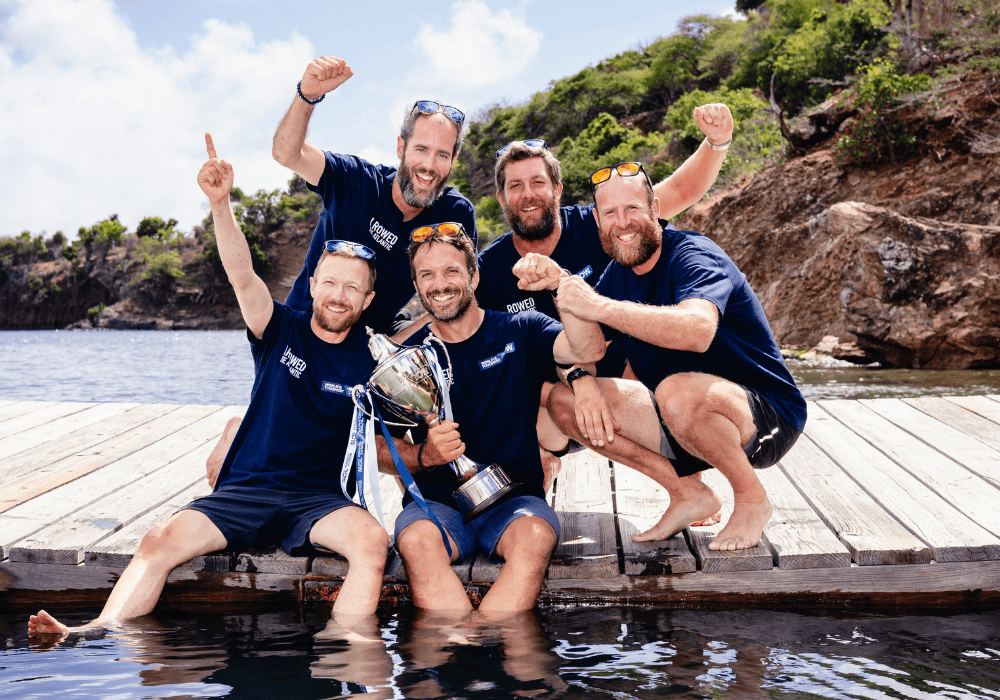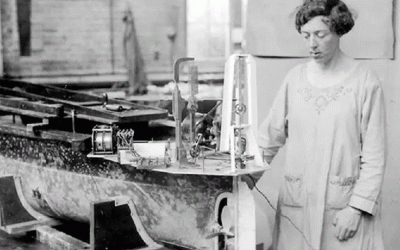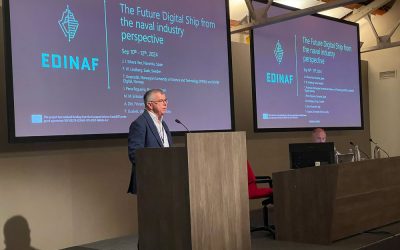Sam Fisk speaks to Commander Mike Forrester OBE about his participation in the fundraising rowing initiative
In January 2020, HMS Oardacious celebrated its first successful event rowing across the Atlantic as part of the premier event of ‘World’s Toughest Row’ – one boat, four crew and three sets of oars. Now, celebrating four successful years of taking part in the event, 2023 crew member Commander Mike Forrester MBE – principal guest and speaker at the 2025 RINA Annual Dinner – speaks to The Naval Architect about how the team is going from strength to strength.
TNA: How and why did the idea come about?
Mike Forrester: Oardacious was hatched by my colleague Hugo Callum not long after they had got back from Trident patrols. There was also a moral desire for fundraising for the wellbeing for submariners. Being part of the armed forces, we are called to deter threats and defend the nation, but the armed forces are more than just equipment; it’s about people. We also have access to what they called ‘adventurers training’, which gives controlled exposure to risk, for those that may want to push themselves a little further.
TNA: What made you join the team?
Mike Forrester: I ended up in the team accidentally, really. I wasn’t a fan of rowing. They had a team of five for their 2023 team, but two withdrew. They invited people to come along for try-outs. I was one of the two that showed up. What drove me was that I wanted to see if I could do it. Being part of the armed forces, when you face a challenge, you are called to step up to it.
TNA: Can you explain the development of the boat, as it’s not your typical rowing boat that you might take out on a river?
Mike Forrester: Your traditional rowing boat would be an open-hulled, wooden construction. The design that we have today has progressed from that. It is constructed by Rannoch Adventurers, which specifically designs purpose-built ocean rowing boats, which come in variations for two to five people, or for more rowers. The RX45 we have can have between three to five crew, but ideally four, mainly due to the power-to-weight ratio. Due to their carbon fibre design, they are slightly longer and narrower and, because the boats are much lighter than your traditional rowing boat, it makes the crossing much quicker. The boat is also self-righting; the daggerboard is quite far forward, as is the rudder. It has two batteries and two solar panels, and water makers that produce 30litres of water an hour.
How is the team selected? Is it for navy personnel only?
Mike Forrester: Yes, they have to be navy. Atlantic Campaigns states the medical requirements that are needed to participate, which are quite stringent. Being in the Royal Navy and also participating in programmes such as ‘adventurers training’, we receive detailed medical checks because of the remoteness of the environment.
How does the fundraising help others in the Royal Navy?
Mike Forrester: The Royal Navy puts a lot of effort into looking after its people. However, some people suffer more than others in life outside the armed services. Some people have better relationships of support; others don’t. We look to raise funds for three sectors, which are crew, families and submariner causes. The funds support in many different ways: for instance, for additional gym facilities for people to train. We also produce family packs to give to families when their partners are away, with a ‘huggable hero’ to comfort children. Money also goes towards funding events; my son recently went on a half-term animation course funded by HMS Oardacious.
What are you looking at doing in the future?
Mike Forrester: An all-ladies team, the ‘Valkyries’, has just completed a crossing. This is important as we need to be more inclusive. We now have two boats, and the 2025 team has recently been selected and has started its training.



